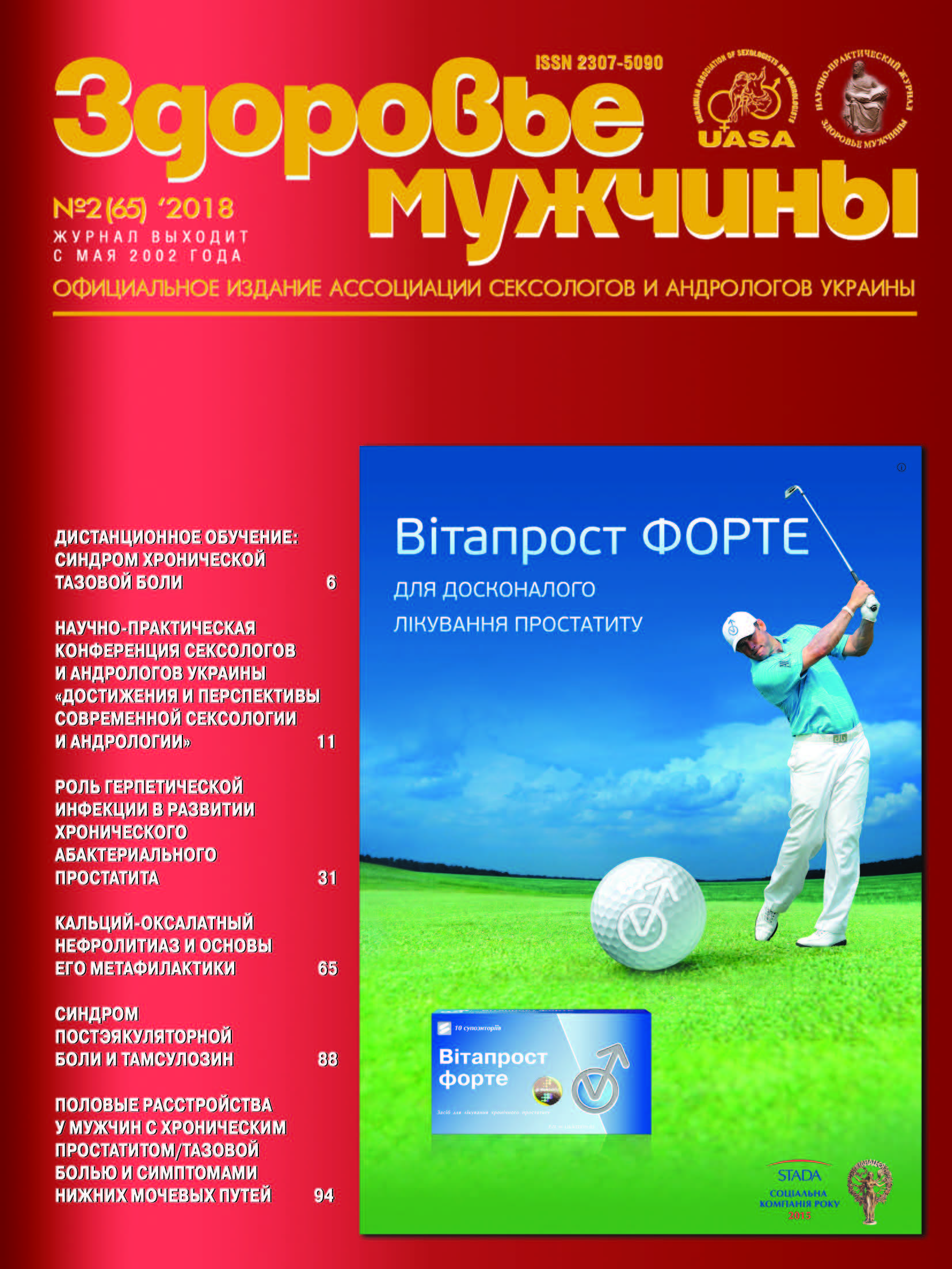The use of herbal drug Canephron® N in ambulatory meta-prevention of uratolysis
##plugins.themes.bootstrap3.article.main##
Abstract
The objective: was to assess the efficacy and safety of Canephron® N in the metaphysics of urate urolithiasis.
Materials and methods. In this single-center, prospective, openlabel, non-randomized, controlled, parallel study, 60 patients with urethra-urethritis urolithiasis (39 men and 21 women) who underwent disintegration/dislocation of concrements, were divided into two groups. In the main group, patients complied with the general preventive measures for liquids and nutrition recommended by the EAU, and Canephron® N was used in standard dosages for 6 months.
Results. The daily diuresis, uric acid levels of blood and urine, the level of magnesium in urine, and the rate of recurrence of urolithiasis in both groups were evaluated.
Conclusion. It was found that the use of Canephron® N with the purpose of secondary prevention of uratogenic urolithiasis causes a significant decrease in the factors of urine lithogenicity: a decrease in the concentration of uric acid in urine, an increase in daily diuresis and a change in urine pH to physiologically optimal amounts, contributes to a significant increase in the concentration of Mg + ions in urine, reduces the rate of relapse of urethane lithiasis in stone formation compared with standard secondary prevention of IBD in 3.8 times.##plugins.themes.bootstrap3.article.details##

This work is licensed under a Creative Commons Attribution 4.0 International License.
Authors retain the copyright and grant the journal the first publication of original scientific articles under the Creative Commons Attribution 4.0 International License, which allows others to distribute work with acknowledgment of authorship and first publication in this journal.
References
Karagiannis A, Skolarikos A, Alexandrescu E, Basic D, Geavlete P, Maletta A, Muslumanoglu AY, Papatsoris A, Petkova K et al. Epidemiologic study of urolithiasis in seven countries of South-Eastern Europe: S.E.G.U.R. 1 study. Arch Ital Urol Androl. 2017 Oct 3;89(3):173–177. https://doi.org/10.4081/aiua.2017.3.173
Strope SA, Wolf JS Jr, Hollenbeck BK. Changes in gender distribution of urinary stone disease. Urology. 2010 Mar;75(3):543–6. https://doi.org/10.1016/j.urology.2009.08.007
Kirkali Z et al. Urinary stone disease: progress, status, and needs. Urology 2015; 86(4):651–653. https://dx.doi.org/10.1016%2Fj.urology.2015.07.006
Luo J, Tuerxun A, Shataer A, Batuer A, Jiang C, Zhou Y, Li Z, Chen D, Liu Y. Kidney Stone Composition in Third-World Areas: What Kashgar Tells Us? J Endourol. 2018 May 14. https://doi.org/10.1089/end.2017.0860
Cloutier J et al. Kidney stone analysis: «give me your stone, I will tell you who you are!». World J Urol 2015; 33:157–169. https://doi.org/10.1007/s00345-014-1444-9
Abou Elala. Epidemiology, pathophysiology, and management of uric acid urolithiasis: A narrative review. J Adv Res; Sep; 8(5):513–527. https://doi.org/10.1016/j.jare.2017.04.005
Tefekli A, Cezayirli F. The history of urinary stones: in parallel with civilization. Sci World J 2013:423964. http://dx.doi.org/10.1155/2013/423964
Antonelli JA, Maalouf MN, Pearle MS, Lotan Y. Use of the National Health and Nutrition Examination Survey to calculate the impact of obesity and diabetes on cost and prevalence of urolithiasis in 2030. Eur Urol 2014; Oct;66(4):724–9. https://doi.org/10.1016/j.eururo.2014.06.036
Li CC, Chien TM, Wu WJ, Huang CN, Chou YH. Uric acid stones increase the risk of chronic kidney disease. Urolithiasis. 2018 Feb 28. https://doi.org/10.1007/s00240-018-1050-1
Rezaee ME et al. Association between multiple chronic conditions and urolithiasis. Int Urol Nephrol 2017; 49(8):1361–1367. https://doi.org/10.1007/s11255-017-1611-1
Ilyas M, Dev G, Gupta A, Bhat TA, Sharma S. Dual-energy computed tomography: A reliable and established tool for In vivo differentiation of uric acid from nonuric acid renal Stones. Niger Postgrad Med J. 2018 Jan-Mar; 25(1):52–59. https://doi.org/10.4103/npmj.npmj_24_18
Lombardo F, Bonatti M, Zamboni GA, Avesani G, Oberhofer N, Bonelli M, et al. Uric acid versus non-uric acid renal stones: In vivo differentiation with spectral CT. Clin Radiol 2017;72:490–6. https://doi.org/10.1016/j.crad.2017.01.018
Turk C, Knoll T, Petrik A, Sarica K, Skolarikos A, Straub M, et al. EAU Guidelines on Urolithiasis, Limited Update. 2016:12 PDF
Gaybullaev AA., Kariev SS. Effects of the herbal combination Canephron N on urinary risk factors of idiopathic calcium urolithiasis in an open study. Zeitschriftfur Phytotherapie 2013. Vol 34(1). P.16–20. https://doi.org/10.1055/s-0032-1331473
Chernenko V.V., Zheltovska N.I., Shtivaser L.M. Metaphylaxis of nephrolithiasis with phitopreparation Canefron N. Advances in clinical and experimental medicine. 2003;4(1):13.





